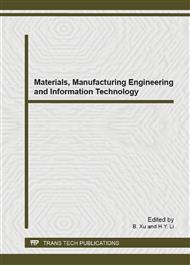p.385
p.389
p.393
p.397
p.401
p.405
p.410
p.415
p.419
Reformulating Input Data for Linear Regression of Demographic Data
Abstract:
In regressing demographic data, neighborhood information needs to be taken into account, which makes conventional linear regression models inappropriate. In this paper, to incorporate neighborhood information without incurring extra computational cost, we investigate various possibilities to reformulate input data. Experiments show that augmenting each site with its neighborhood information gives the best results.
Info:
Periodical:
Pages:
401-404
Citation:
Online since:
March 2014
Authors:
Keywords:
Price:
Сopyright:
© 2014 Trans Tech Publications Ltd. All Rights Reserved
Share:
Citation:


